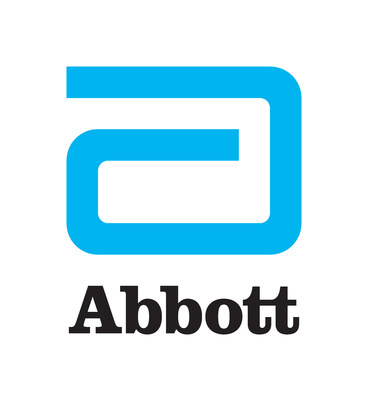New Research Finds Abbott's Optical Coherence Tomography Imaging Changed Treatment Decisions in 88% of Artery Blockages
-- Using optical coherence tomography (OCT)-guided percutaneous coronary intervention (PCI), physicians were able to select the right size stents and place them with greater precision
-- Imaging techniques such as OCT have been shown to improve outcomes during stenting procedures¹, but remain underutilized in global clinical settings due to lack of awareness
-- OCT is a high-resolution, infrared light-based imaging technique that provides unparalleled accuracy for physicians during stent implantation
ABBOTT PARK, Ill., June 26, 2020 /PRNewswire/ -- Abbott (NYSE: ABT) today announced new data from the company's LightLab Initiative that showed optical coherence tomography (OCT) imaging significantly changes how physicians decide to treat a vessel compared to traditional angiography by providing physicians improved visualization within a patient's blood vessels. Data from the study revealed physicians altered their treatment strategy in 88% of coronary artery blockages based on new information provided by OCT.
Using laser technology, OCT captures high-resolution images inside a patient's arteries, displaying the type and severity of disease in the vessel, as well as enabling more accurate measurements to determine how the patient should be treated.
"After planning a procedure with angiography alone, we exposed physicians to all the information provided by OCT on the same blockage and were able to demonstrate the significant impact that the information had on our decisions," said Hiram Bezerra, M.D., professor of medicine at the University of South Tampa and the director of Cardiac Interventional Services at Tampa General Hospital in Florida. "OCT takes the guesswork out of angiography, offering doctors real-time high-quality granularity and precision when performing PCIs, and helping doctors make real-time decisions in the cath lab."
This is the first data release from Abbott's LightLab Initiative, which was presented as part of a virtual three-day PCR e-Course held by the European Association of Percutaneous Cardiovascular Interventions (EAPCI), June 25-27. The new data provides strong evidence of the value of using OCT for decision-making within the PCI procedure. Initial data found:
- OCT changes angiographic-based decisions in 88% of lesions.
- After deploying a stent, physicians made changes in treating 31% of lesions based on OCT information to treat damage to the artery previously invisible with angiography alone.
- Physicians improved their assessment of potential blockages as a result of using OCT, which better helped inform which size of stent to use and optimal stent deployment compared with angiography alone.
"The LightLab Initiative has given us great insights into the challenges facing interventional cardiologists in the cath lab and the impact OCT can have on the decisions physicians make in treating their patients," said Nick West, M.D., divisional vice president, Medical Affairs, and chief medical officer of Abbott's vascular business. "The data has also highlighted how effective OCT can be at treating patients with complex cardiovascular disease with greater precision."
About the LightLab Initiative
The LightLab Initiative was designed to examine the role and impact of OCT on physician decision-making, procedural efficiency and procedural safety over angiography during procedures for patients with vascular disease. Abbott field clinical engineers collaborated with interventional cardiologists in 12 medical centers across the United States and collected PCI procedural data over a 12-month period.
Of the 2,203 procedures and 1,016 interventions that were assessed in the first phase of the LightLab Initiative, doctors used OCT before and after stenting in 652 lesions.
The level of detail and the volume of data collected in this real-world patient cohort demonstrates a clear and important impact of OCT on lesion assessment, procedural planning and stent optimization, with further analyses from subsequent phases of the program planned in coming months. The subsequent phases of the LightLab Initiative will focus on optimizing the prescribed treatment steps when using OCT to achieve greater efficiency (shorter timing) and safety (lower contrast and radiation exposure) gains, thereby identifying and removing barriers to OCT adoption.
About Optical Coherence Tomography
OCT is an intracoronary imaging platform that uses light-based technology to help characterize and assess coronary arteries from inside the vessel with high precision, allowing for assessment of the degree and characteristics of coronary artery disease, accurate dimensional measurement of the artery and assessment of the quality of stent deployment2.
About Abbott
Abbott is a global healthcare leader that helps people live more fully at all stages of life. Our portfolio of life-changing technologies spans the spectrum of healthcare, with leading businesses and products in diagnostics, medical devices, nutritionals and branded generic medicines. Our 103,000 colleagues serve people in more than 160 countries.
Connect with us at www.abbott.com, on LinkedIn at www.linkedin.com/company/abbott-/, on Facebook at www.facebook.com/Abbott and on Twitter @AbbottNews and @AbbottGlobal
1 Jones, Daniel A. et al "Angiography Alone Versus Angiography Plus Optical Coherence Tomography to Guide Percutaneous Coronary Intervention." JACC: Cardiovascular Interventions 11.14 (2018): 1313-1321. Web. 23 Aug. 2018.
2 https://www.cathlabdigest.com/content/next-innovation-pci-not-stent-value-optical-coherence-tomography-oct
SOURCE Abbott

For further information: Abbott Media, Alicia Swanson, (669) 210-7204; or Abbott Financial, Mike Comilla, (224) 668-1872
 BACK TO PRESS RELEASES
BACK TO PRESS RELEASES
